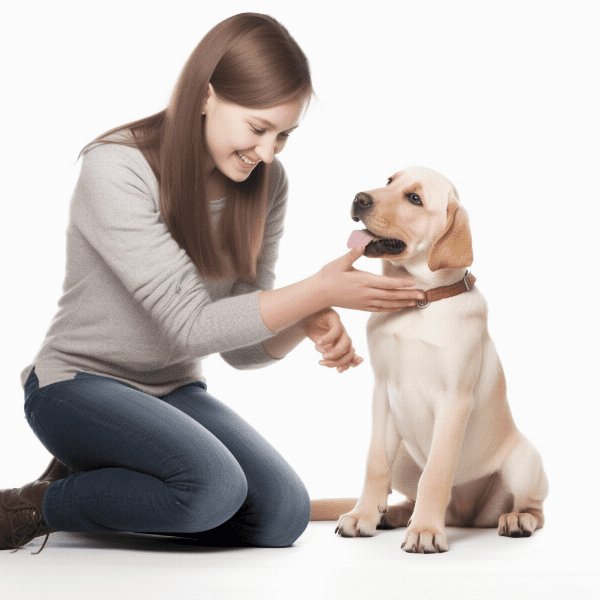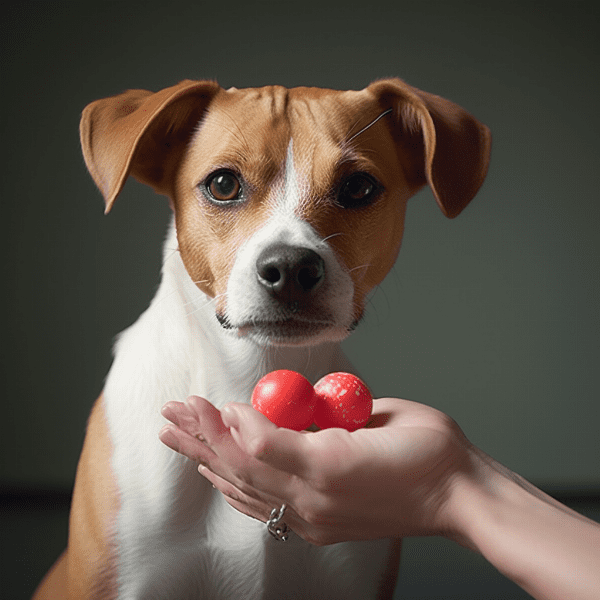Table of Contents
- Understanding Why Puppies Mouth
- Redirecting Mouthing Behaviors
- Positive Reinforcement Training Techniques
- Using Chew Toys to Prevent Mouthing
- Socializing Your Puppy to Reduce Mouthing
- Consistency in Training and Correction Methods
- Avoiding Punishment as a Mouthing Deterrent
- Seeking Professional Help for Persistent Mouthing
- Teaching Your Puppy Bite Inhibition
- Celebrating Progress in Mouthing Training
Understanding Why Puppies Mouth
Puppies use their mouths to explore the world around them, just like infants use their hands. Mouthing is a natural behavior that allows puppies to learn about their environment and develop their senses. However, this behavior can become problematic when puppies start to use their teeth too aggressively, causing discomfort or harm to their human companions.
Mouthing as a Playful Behavior
In many cases, mouthing is simply a playful behavior. Puppies often use their mouths to initiate play with their human companions or other pets. They may also mouth during play as a way to communicate excitement or to get attention.
Mouthing as a Teething Behavior
Another reason why puppies mouth is to alleviate the discomfort of teething. Just like human babies, puppies go through a teething phase where their teeth are growing and pushing through their gums. Mouthing can help relieve the discomfort of teething and provide a sense of relief.
Mouthing as a Communication Behavior
Mouthing can also be a way for puppies to communicate their needs and desires. For example, a puppy may mouth to signal hunger, thirst, or the need to go outside. By mouthing, they are trying to convey a message to their human companion.
Mouthing as a Behavioral Problem
While mouthing is a natural behavior, it can become a problem if the puppy is using too much force or biting too hard. This can lead to injuries or create a fear of the puppy in their human companion. Additionally, if mouthing is not corrected, it can become a habit that persists into adulthood, making it difficult to manage the behavior.
Understanding why puppies mouth is the first step in correcting this behavior. By understanding the reasons behind mouthing, you can better address the behavior and work with your puppy to find alternative ways to communicate and play.

Redirecting Mouthing Behaviors
Redirecting mouthing behaviors is an essential step in correcting this behavior. As mentioned earlier, mouthing is a natural behavior for puppies, but it can become a problem if left unaddressed. Redirecting mouthing behaviors involves teaching your puppy alternative ways to communicate and play that do not involve using their mouth.
Providing Appropriate Chew Toys
One effective way to redirect mouthing behavior is by providing appropriate chew toys for your puppy. Chew toys can provide a sense of relief during the teething phase and give your puppy something to chew on instead of your hands or other belongings. Choose chew toys that are safe for your puppy’s age and size and encourage them to chew on the toy instead of mouthing.
Teaching “Leave It” and “Drop It” Commands
Teaching your puppy the “leave it” and “drop it” commands can also help redirect mouthing behavior. When your puppy begins to mouth on something they shouldn’t, use the “leave it” command to divert their attention away from the object. If your puppy already has something in their mouth, use the “drop it” command to get them to release the object. These commands can help teach your puppy appropriate boundaries and redirect their mouthing behavior.
Encouraging Gentle Play
Puppies often use their mouths during play, but it’s essential to teach them to play gently. Encourage gentle play by rewarding your puppy when they play without mouthing or biting. If your puppy becomes too rough during play, redirect their attention to a chew toy or take a break from playtime. This can help teach your puppy appropriate play behavior and reduce mouthing.
Consistent Correction
Redirecting mouthing behaviors can take time and patience, but it’s an essential step in correcting this behavior. By providing appropriate chew toys, teaching commands, encouraging gentle play, and consistent correction, you can redirect your puppy’s mouthing behavior and teach them appropriate boundaries.
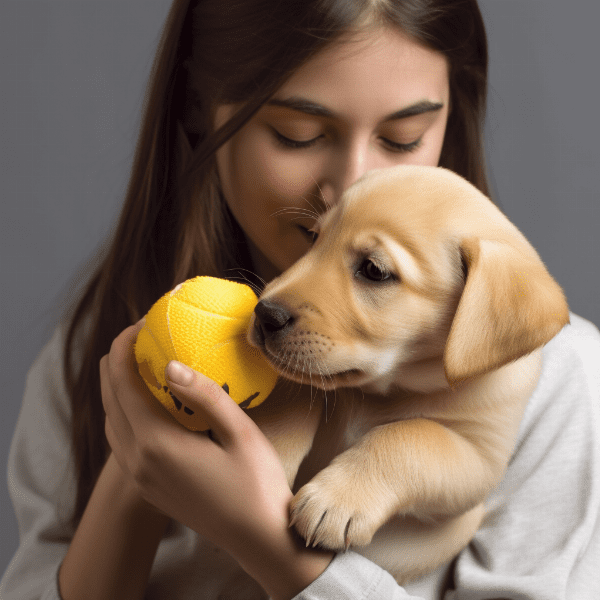
Positive Reinforcement Training Techniques
Positive reinforcement training techniques involve rewarding your puppy for good behavior, rather than punishing them for bad behavior. This type of training can be especially effective in correcting mouthing behavior because it teaches your puppy appropriate behavior and encourages them to repeat that behavior in the future.
Clicker Training
Clicker training is a form of positive reinforcement training that can be effective in correcting mouthing behavior. Clicker training involves using a clicker to make a distinct sound when your puppy exhibits good behavior. The sound of the clicker signals to your puppy that they have done something right, and they will receive a reward. Clicker training can help teach your puppy appropriate behavior and reduce mouthing.
Timeouts
Timeouts can be an effective positive reinforcement technique for correcting mouthing behavior. When your puppy mouths too hard or bites, remove them from the situation and place them in a designated timeout area. This should be a quiet, safe space where your puppy can calm down and reflect on their behavior. After a few minutes, release your puppy from timeout and redirect their attention to an appropriate chew toy or gentle play. This can help teach your puppy appropriate behavior and reduce mouthing.
.
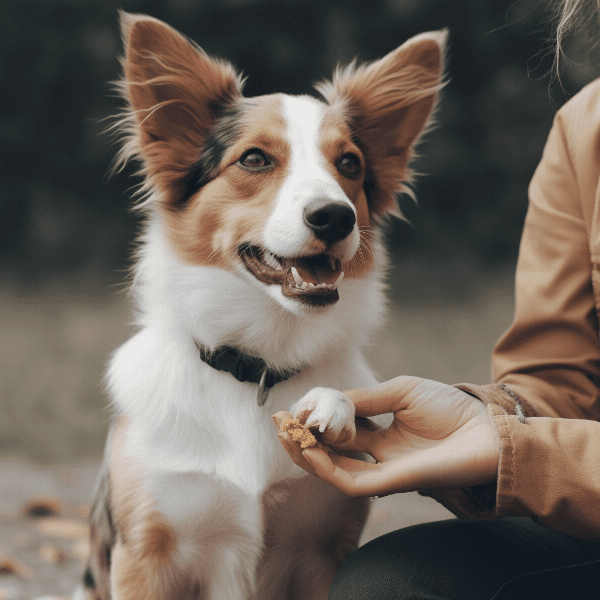
Using Chew Toys to Prevent Mouthing
Chew toys can be a highly effective tool for preventing mouthing behavior in puppies. Providing appropriate chew toys can help alleviate the discomfort of teething and redirect your puppy’s mouthing behavior away from your hands or other belongings.
Choosing Appropriate Chew Toys
When choosing chew toys for your puppy, it’s important to select toys that are safe and appropriate for their age and size. Avoid toys that are too small or too hard, as these can pose a choking hazard or damage your puppy’s teeth. Soft rubber toys, nylon chews, and natural bones are all good options for puppies.
Introducing Chew Toys
Introducing chew toys to your puppy is an important step in preventing mouthing behavior. Offer the toy to your puppy when they show signs of wanting to mouth or chew on something, such as during playtime or when they seem to be in discomfort from teething. Encourage your puppy to chew on the toy instead of your hands or other belongings.
Rotating Chew Toys
Rotating chew toys can help keep your puppy interested and engaged with their toys, reducing the likelihood of mouthing behavior. Offer your puppy a variety of different chew toys and rotate them regularly to keep their interest. This can also help prevent destructive chewing behavior by providing appropriate outlets for your puppy’s chewing needs.
Monitoring Chew Toy Use
It’s important to monitor your puppy’s use of chew toys to ensure they are using them appropriately and not posing a choking hazard. Always supervise your puppy when they are chewing on a toy and replace the toy if it becomes damaged or too small. This can help ensure your puppy’s safety and prevent mouthing behavior.
Using chew toys to prevent mouthing behavior is an effective strategy for redirecting your puppy’s attention away from your hands or other belongings. By choosing appropriate chew toys, introducing them to your puppy, rotating them regularly, and monitoring their use, you can prevent mouthing behavior and provide appropriate outlets for your puppy’s chewing needs.
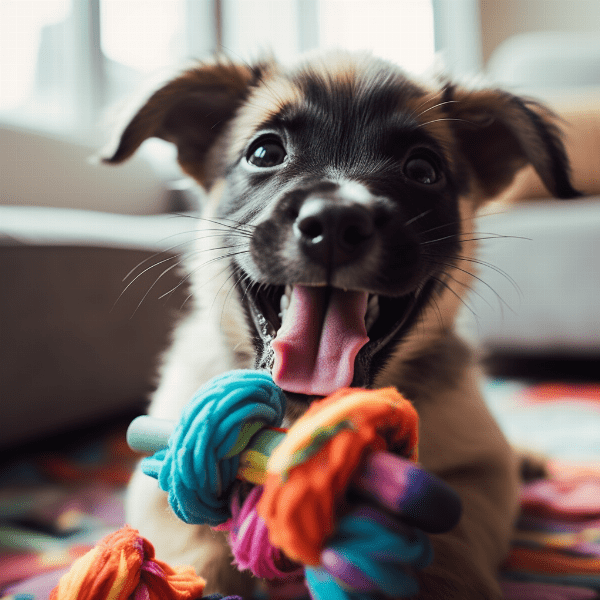
Socializing Your Puppy to Reduce Mouthing
Socialization is an essential part of puppy training that can help reduce mouthing behavior. Socializing your puppy involves exposing them to different people, animals, and environments to help them become well-adjusted and confident. This can help reduce anxiety and prevent mouthing behavior caused by fear or aggression.
Early Socialization
Early socialization is key to reducing mouthing behavior. Socialize your puppy as early as possible, ideally starting at 8-12 weeks of age. Introduce your puppy to different people, animals, and environments in a controlled and positive manner. This can help your puppy become comfortable in a variety of situations and reduce the likelihood of mouthing behavior.
Positive Reinforcement During Socialization
During socialization, use positive reinforcement to reinforce good behavior and reduce mouthing. Reward your puppy when they exhibit calm and appropriate behavior, such as not mouthing or biting during interactions with other animals or people. This can help your puppy learn appropriate behavior and reduce mouthing during socialization.
Gradual Exposure
Socialization should be a gradual process that allows your puppy to become comfortable with new experiences over time. Start by exposing your puppy to familiar people and animals, and gradually introduce them to new situations and environments. This can help reduce anxiety and prevent mouthing behavior caused by fear or stress.
Consistency in Socialization
Consistency is key when socializing your puppy to reduce mouthing behavior. It’s important to socialize your puppy regularly, ideally on a daily basis, and to reinforce appropriate behavior consistently. This can help your puppy learn appropriate behavior and reduce mouthing over time.
Socializing your puppy is an important part of reducing mouthing behavior. Early socialization, positive reinforcement, gradual exposure, and consistency can all help your puppy become well-adjusted and confident, reducing the likelihood of mouthing behavior caused by fear or aggression.
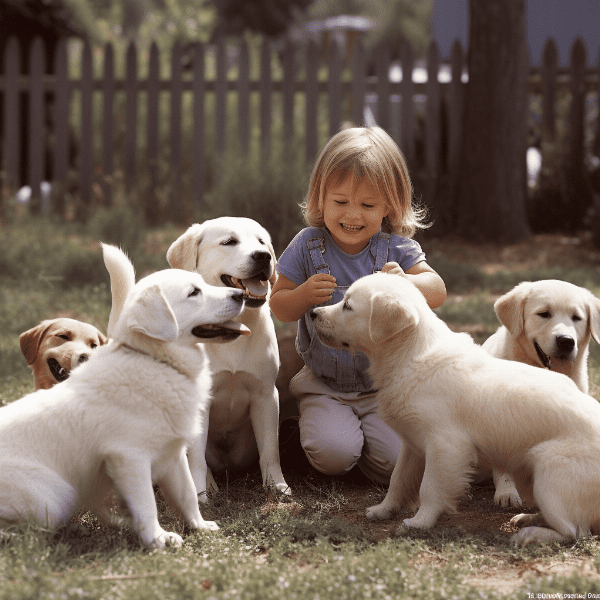
Consistency in Training and Correction Methods
Consistency is crucial when training your puppy and correcting mouthing behavior. Inconsistency can confuse your puppy and make it more difficult to learn appropriate behavior. It’s essential to establish consistent training and correction methods to help your puppy learn and reinforce appropriate behavior.
Establishing Clear Rules and Boundaries
Establishing clear rules and boundaries is an important step in consistency. Your puppy needs to know what is and isn’t acceptable behavior. Make sure everyone in the household is on the same page regarding rules and boundaries to avoid confusion for your puppy.
Using Consistent Commands and Cues
Using consistent commands and cues is another essential aspect of consistency. Use the same commands and cues every time to communicate with your puppy. This can help your puppy understand what is expected of them and learn appropriate behavior more quickly.
Correcting Mouthing Behavior Consistently
Correcting mouthing behavior consistently is also essential. Use a firm “no” or “ouch” to communicate to your puppy that their mouthing behavior is not acceptable. Then, redirect their attention to an appropriate chew toy or gentle play. Consistent correction can help teach your puppy appropriate behavior and reduce mouthing over time.
Avoiding Punishment
It’s important to avoid punishment when correcting mouthing behavior. Punishing your puppy can create fear and anxiety and make mouthing behavior worse. Instead, focus on consistent training and positive reinforcement to teach your puppy appropriate behavior.
Consistency in training and correction methods is crucial when correcting mouthing behavior in your puppy. Establishing clear rules and boundaries, using consistent commands and cues, reinforcing good behavior, correcting mouthing behavior consistently, and avoiding punishment can all help teach your puppy appropriate behavior and reduce mouthing over time.

Avoiding Punishment as a Mouthing Deterrent
Punishing your puppy for mouthing behavior can have negative consequences and should be avoided. Punishment can create fear and anxiety, damage the bond between you and your puppy, and make mouthing behavior worse. Instead, focus on positive reinforcement and redirecting behavior to teach appropriate behavior.
Understanding the Negative Effects of Punishment
Punishment can have negative effects on your puppy’s behavior and well-being. Punishing your puppy can cause fear, anxiety, and stress, which can lead to a range of behavioral problems, including increased mouthing behavior. Additionally, punishment can damage the bond between you and your puppy, making it more difficult to establish trust and reinforce appropriate behavior.
Using Positive Reinforcement Techniques
Positive reinforcement techniques are a more effective and humane way to deter mouthing behavior. Reinforce good behavior with praise and rewards, such as treats and toys, to encourage your puppy to repeat that behavior. Use redirection and consistent correction to teach your puppy appropriate behavior and avoid punishment.
Redirecting Mouthing Behavior
Redirecting mouthing behavior is an effective way to teach your puppy appropriate behavior. Provide appropriate chew toys and encourage gentle play to redirect your puppy’s mouthing behavior away from your hands or other belongings. Use consistent correction and positive reinforcement to teach appropriate behavior and reinforce good behavior.
Seeking Professional Help
Avoiding punishment as a mouthing deterrent is important for your puppy’s well-being and behavior. Using positive reinforcement techniques, redirecting mouthing behavior, and seeking professional help can all help correct mouthing behavior and establish appropriate behavior.

Seeking Professional Help for Persistent Mouthing
If your puppy’s mouthing behavior persists despite your efforts to correct it, seeking professional help may be necessary. A professional trainer or behaviorist can provide guidance and support to help you establish appropriate training and correction methods and correct persistent mouthing behavior.
Signs of Persistent Mouthing
Persistent mouthing behavior may be a sign of an underlying issue that requires professional help. Signs of persistent mouthing may include excessive biting, aggression, fear, anxiety, or stress. If you notice these signs in your puppy, seeking professional help is essential to address the root cause of the behavior.
Benefits of Professional Help
Professional help can provide several benefits when addressing persistent mouthing behavior. A professional trainer or behaviorist can evaluate your puppy’s behavior and provide customized training and correction methods to address the underlying cause of the behavior. They can also provide ongoing support and guidance to ensure that training methods are consistent and effective.
Choosing a Professional
When choosing a professional trainer or behaviorist, it’s essential to do your research and select someone with the appropriate credentials and experience. Look for someone who specializes in puppy behavior and has a track record of success. Consider reading reviews and speaking with other pet owners to get a better sense of their expertise and approach.
Working with a Professional
Working with a professional trainer or behaviorist requires consistency and commitment. Follow their recommendations for training and correction methods and provide regular updates on your puppy’s progress. Be open to feedback and suggestions, and communicate any concerns or issues that arise during the training process.
Seeking professional help for persistent mouthing behavior can provide the support and guidance necessary to address underlying issues and establish appropriate training and correction methods. By choosing the right professional, committing to the training process, and working with them consistently, you can reduce mouthing behavior in your puppy and establish appropriate behavior.
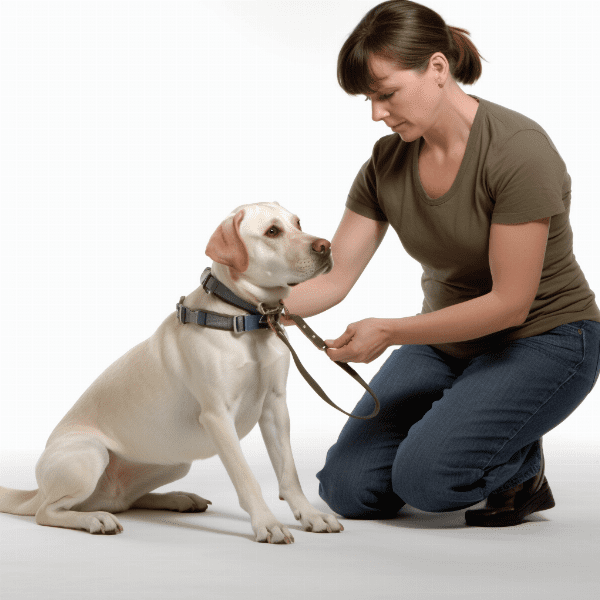
Teaching Your Puppy Bite Inhibition
Teaching your puppy bite inhibition is an important aspect of puppy training that can help prevent mouthing behavior. Bite inhibition refers to a puppy’s ability to control the force of their bite, which can reduce the likelihood of accidental injury during play.
Using Gentle Play to Teach Bite Inhibition
Gentle play is an effective way to teach your puppy bite inhibition. Encourage your puppy to play with gentle nibbles and bites, rather than hard mouthing or biting. When your puppy bites too hard, let out a loud yelp or “ouch” to signal that the bite was too strong. This can help your puppy learn to control the force of their bite and avoid mouthing behavior.
Rewarding Good Behavior
Rewarding good behavior is an essential part of teaching bite inhibition. When your puppy plays without mouthing or biting too hard, provide praise and a reward, such as a treat or toy. This can reinforce appropriate behavior and encourage your puppy to repeat it in the future.
Gradually Increasing Stimulation
Gradually increasing stimulation during play can also help teach bite inhibition. Start with gentle play and gradually increase the level of stimulation over time. This can help your puppy learn to control their bite force in a variety of situations and reduce the likelihood of mouthing behavior.
Avoiding Rough Play
It’s important to avoid rough play and wrestling with your puppy, as this can encourage mouthing behavior and make it more difficult to teach bite inhibition. Instead, focus on gentle play and positive reinforcement to teach appropriate behavior and reduce mouthing.
Consistency in Training
Teaching your puppy bite inhibition is an important aspect of reducing mouthing behavior. Using gentle play, rewarding good behavior, gradually increasing stimulation, avoiding rough play, and maintaining consistency in training can all help teach your puppy appropriate behavior and reduce mouthing over time.
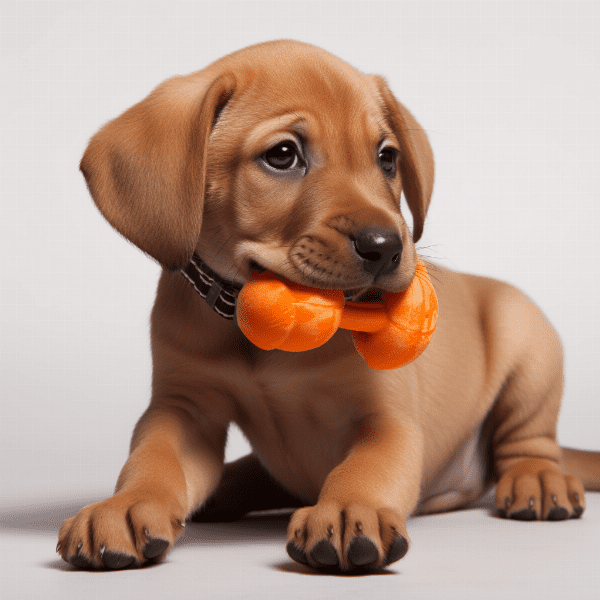
Celebrating Progress in Mouthing Training
Celebrating progress in mouthing training is an important part of reinforcing good behavior and motivating your puppy to continue learning appropriate behavior. Here are some tips for celebrating progress in mouthing training.
Providing Praise and Rewards
Providing praise and rewards is an effective way to celebrate progress in mouthing training. When your puppy exhibits appropriate behavior, such as playing without mouthing or chewing on appropriate chew toys, provide verbal praise and a reward, such as a treat or toy. This can reinforce good behavior and encourage your puppy to repeat it in the future.
Tracking Progress
Tracking progress in mouthing training can also help celebrate progress and identify areas for improvement. Keep a record of your puppy’s behavior, noting when mouthing behavior occurs and when appropriate behavior is exhibited. This can help you identify patterns and adjust training methods as needed.
Setting Goals and Milestones
Setting goals and milestones can provide a roadmap for celebrating progress in mouthing training. Establish achievable goals, such as reducing mouthing behavior by a certain percentage within a specified timeframe, and celebrate when those goals are met. This can help reinforce good behavior and motivate your puppy to continue learning appropriate behavior.
Acknowledging Setbacks
Acknowledging setbacks is also important when celebrating progress in mouthing training. Recognize when setbacks occur and use them as an opportunity to adjust training methods and reinforce good behavior. This can help your puppy learn from their mistakes and continue progressing in their training.
Consistency in Reinforcement
Consistency in reinforcement is crucial when celebrating progress in mouthing training. It’s important to reinforce good behavior consistently and correct mouthing behavior immediately. This can help your puppy learn appropriate behavior and reduce mouthing over time.
Celebrating progress in mouthing training is an important part of reinforcing good behavior and motivating your puppy to continue learning appropriate behavior. By providing praise and rewards, tracking progress, setting goals and milestones, acknowledging setbacks, and maintaining consistency in reinforcement, you can celebrate progress and reduce mouthing behavior in your puppy.
